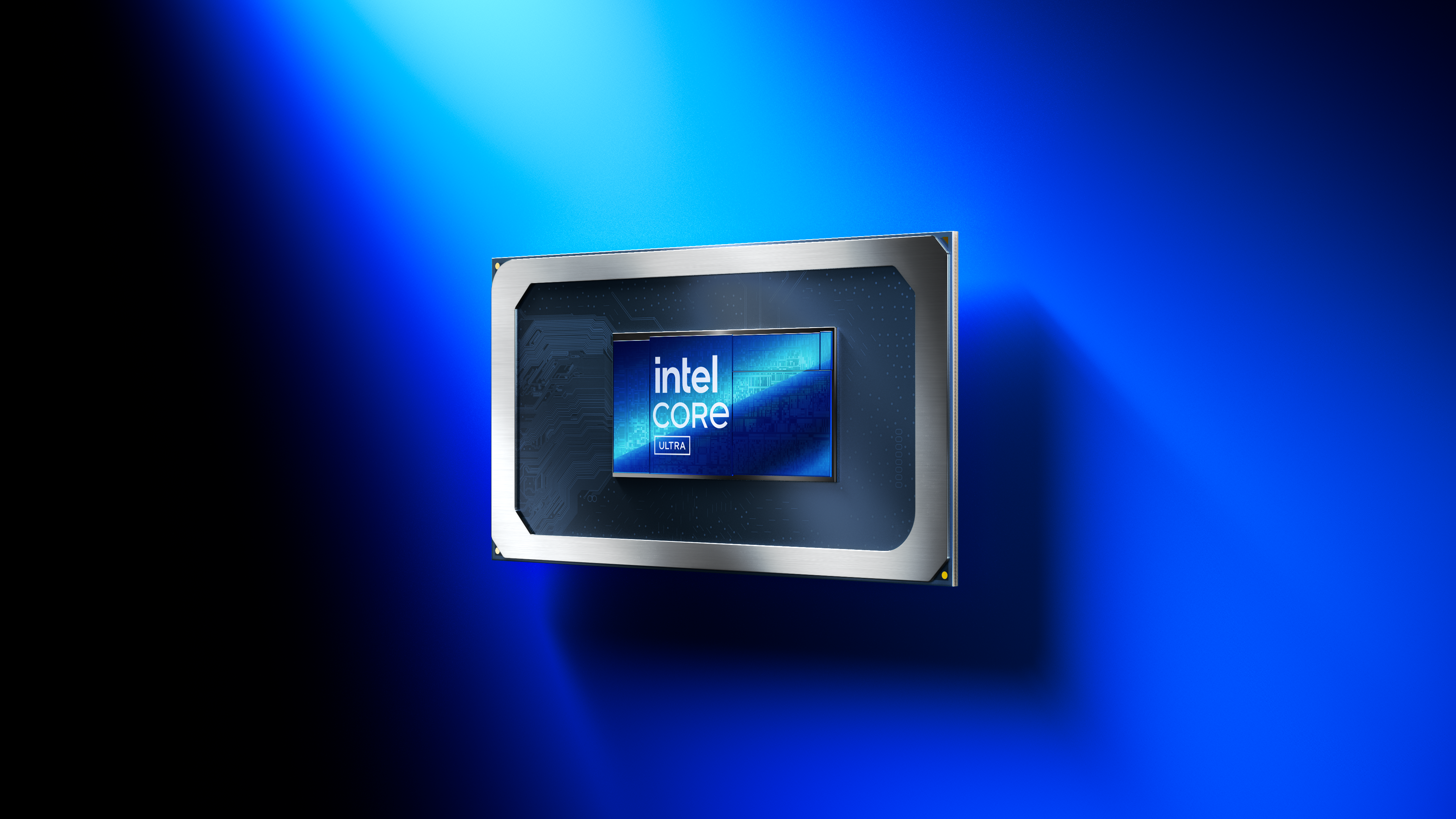Intel's Nova Lake mobile specs leaks out, top end HX variant to feature 28 CPU cores and 4 Xe cores — Entire lineup is reportedly limited to a single compute tile
Not coming until late next year.

Given the recent news cycle surrounding Intel's administration and its ambivalent future ambitions, you'd be forgiven for thinking that the company lacks proactive plans. However, it remains firmly in the chip making business, and the rumor mill is alive as ever. The Blue Team is working on its upcoming Panther Lake (mobile) lineup at the moment, set to release later this year, but it's next year's Nova Lake that has leaked yet again. This time, we have spied the purported exact core configs of all Nova Lake variants, including the top-end Nova Lake-HX chip.
Coming from reliable tipster Jaykihn, Nova Lake will launch in the usual HX, H, and U variants, each targeting different laptop categories. At the top, the highest-end Nova Lake-HX SKU will feature eight P-Cores, 16 E-Cores, and four low-power LP-E Cores, plus a quad-core Xe3 iGPU—a total of 28 CPU cores when added up. That puts it in the same ballpark as the current Arrow Lake 285HX, albeit with a different balance of high-efficiency cores.
Interestingly, this leak does not mention the Nova Lake-AX chips that surfaced earlier. Recently, reports have suggested these are seemingly on the chopping block already, which means Intel still won't have an answer to AMD's Strix Halo. Still, it paints a better picture than Panther Lake, which won't even have an HX variant, but both will fall far behind the rumored 48-core GPU that we might get with Nova Lake-AX.
Nova Lake Mobile2+0+4+24+0+4+44+8+4+44+8+4+128+16+4+4August 9, 2025
The mainstream Nova Lake-H tier will top out at 16 cores (four P-Cores, eight E-Cores, and four LP-E Cores) and offer up to 12 Xe3 GPU cores depending on SKU. These designs share similarities with the previously leaked Panther Lake-H chips, though with different CPU microarchitectures and a slightly altered GPU layout. Anyhow, we then have likely the Nova Lake-U family with a maximum core count of eight (4P+4LP) along with four Xe3 cores going to the iGPU.
On the lowest end, a 2P+4LP model is also expected, carrying only two Xe3 cores, positioned as the successor to Intel’s Wildcat Lake platform, catering to budget notebooks where cost and battery life are the main priorities—justifying its lack of standard E-cores. This also means that, if we believe the leak, every single Nova Lake chip is going to have four LP-E cores.
Speaking of all the cores, the Nova Lake lineup is set to also introduce microarchitectures that diverge from the current Lunar Lake and Arrow Lake lineups. We expect to see Coyote Cove P-Cores and Arctic Wolf E-Cores, alongside Skymont-based LP-E cores. As mentioned previously, the GPU cores are from Intel's Xe3 'Celestial' architecture. We also got rumor-mill confirmation that Nova Lake mobile will not use two compute tiles like its desktop counterpart.
8+16+4+4Xe = NVL-HX.Mobile doesn't need dual compute tiles.August 9, 2025
These configs round out the Nova Lake lineup. We've included a table below to better illustrate and compare the specs, but keep in mind that this just a rumor, and a potentially far-fetched one at that. Literally. Because Nova Lake is more than a year away and a lot can change before it actually releases. We're likely going to hear more about Nova Lake in the build up to its launch after Panther Lake—set to debut in the second half of this year—comes out, finally bringing Intel's 18A process node to the market.
Get Tom's Hardware's best news and in-depth reviews, straight to your inbox.
SKU | Peformance Cores | Efficiency Cores | Low-Power Efficiency Cores | Xe3 GPU Cores | Total CPU Core Count |
|---|---|---|---|---|---|
Nova Lake-HX | 8 | 16 | 4 | 4 | 28 |
Nova Lake-H (graphics focused) | 4 | 8 | 4 | 12 | 16 |
Nova Lake-H | 4 | 8 | 4 | 4 | 16 |
Nova Lake-U | 4 | 0 | 4 | 4 | 8 |
Nova Lake-U (lowest end) | 2 | 0 | 4 | 2 | 6 |
Follow Tom's Hardware on Google News to get our up-to-date news, analysis, and reviews in your feeds. Make sure to click the Follow button.

Hassam Nasir is a die-hard hardware enthusiast with years of experience as a tech editor and writer, focusing on detailed CPU comparisons and general hardware news. When he’s not working, you’ll find him bending tubes for his ever-evolving custom water-loop gaming rig or benchmarking the latest CPUs and GPUs just for fun.
-
usertests What stood out to me. First, Panther Lake with 10 Xe cores. I thought 12 was planned but maybe I wasn't paying attention.Reply
Panther Lake is practically a subset of Nova Lake, with the bottom feeder configuration reappearing and the U/H-alike getting a graphics focused version. Putting the strongest graphics in a separate SKU is easy to do with tiles, and probably a good idea to avoid wasting silicon that will sit unused in laptops with discrete graphics.
Intel is not being generous with P-cores here. Nothing except the HX gets more than 4, and that's basically a BGA desktop chip. I don't think it matters that much for gaming but someone will complain.
2+0+4+2 corresponds exactly to Wildcat Lake. So is that Wildcat Lake as we know it, or three different products that are almost the same? It doesn't make sense. I see the article addresses that:
On the lowest end, a 2P+4LP model is also expected, carrying only two Xe3 cores, positioned as the successor to Intel’s Wildcat Lake platform
It seems too soon for that, but maybe it's coming much later than the others.
I don't think it matters that 52 cores isn't coming to laptops. But a bLLC competitor to AMD's Dragon/Fire Range X3D would be appreciated. -
thestryker Reply
There is this article just didn't show all of the leaked information:usertests said:What stood out to me. First, Panther Lake with 10 Xe cores. I thought 12 was planned but maybe I wasn't paying attention.
P/E/LPE/Xe3:
PTL-H:
4/8/4/12
4/8/4/4
4/0/4/4
WCL:
2/0/4/2
in addition to what they did show:
PTL-H:
4/4/4/10
4/4/4/4
2/0/4/2 (this is apparently not WCL) -
Alvar "Miles" Udell The headline: top end HX variant to feature 28 CPU coresReply
The reality: top end HX variant to feature 8 P-Cores, 16 E-Cores, and 4 LP-E Cores
So will it be beaten by a 16 core AMD CPU? -
usertests Reply
Very strange. I think some of this is probably wrong, or Intel is learning they can rapidly iterate after splitting everything into chiplets (I have no idea if Wildcat Lake is monolithic or chiplet-based).thestryker said:2/0/4/2 (this is apparently not WCL)
AMD is going to be doing the same stuff, especially in mobile. Strix Point is already a 4+8, Medusa APUs look even more complicated and are including 2 LP cores.Alvar Miles Udell said:So will it be beaten by a 16 core AMD CPU?
However, a sequel to Fire Range with 2 chiplets should be 24 classic cores (maybe 24+0+2), easily beating 8+16+4 from Intel. -
YSCCC It looks to me like a Raptor Lake config (8p 16e) or maybe arrow lake config without hyper threading, but now put another 4 even slower LP E cores inside (Xe core looks to me just iGPU core?) and this don't sounded very competitive to the upcoming AMD...Reply -
usertests Reply
Basically it's half the potential of desktop since they can use two of the 8+16 tile but they choose not to according to the leak. But it's not unchanged from Raptor/Arrow since the P/E cores are updated. Coyote Cove and Arctic Wolf or whatever they are calling them. IPC should be up, and likely clocks, with better performance per watt.YSCCC said:It looks to me like a Raptor Lake config (8p 16e) or maybe arrow lake config without hyper threading, but now put another 4 even slower LP E cores inside (Xe core looks to me just iGPU core?) and this don't sounded very competitive to the upcoming AMD...
HX is a desktop part put into laptops. You don't need more than 8 P-cores and 16 E-cores for gaming and it should be fine for productivity. What would sweeten the deal: Intel brings bLLC (big L3 cache) to laptops to compete with 9955HX3D.
LP E-cores are good for idling or light tasks if they work properly.
4 Xe3 cores isn't even bad. If it's just a little faster than the Arrow Lake-S iGPU, it will be faster than an 8500G and maybe a GTX 1630.
I don't think this 28 core will beat AMD's Zen 6 Fire Range successor, but it will be a good chip. -
thestryker Reply
Yeah I have no idea what exactly would make up the difference between them. It is possible there will be a CPU Tile without E-cores though given that there is a 4/0/4 PTL configuration. Perhaps it's something different with IO or SOC Tiles, but I'd be surprised if WCL was monolithic unless maybe they're using a different manufacturing process.usertests said:Very strange. I think some of this is probably wrong, or Intel is learning they can rapidly iterate after splitting everything into chiplets (I have no idea if Wildcat Lake is monolithic or chiplet-based). -
TerryLaze Reply
Only because everybody is over-hyping zen 6.YSCCC said:It looks to me like a Raptor Lake config (8p 16e) or maybe arrow lake config without hyper threading, but now put another 4 even slower LP E cores inside (Xe core looks to me just iGPU core?) and this don't sounded very competitive to the upcoming AMD...
Also if amd releases a 24core CPU it will be either super expensive or it will ruin amd financially. -
usertests Reply
What exactly do you think is overhyped about Zen 6? AMD have been making tiny 8-core chiplets for years, moving that up to 12-core after a couple of node shrinks (from N4X to N2P/N2X) won't be a problem for them. The 24-core flagship desktop CPU could start out at $800 (9950X was $649 MSRP), but it would be profitable for them even at $500, because ~75mm^2 CCDs cost so little.TerryLaze said:Only because everybody is over-hyping zen 6.
Also if amd releases a 24core CPU it will be either super expensive or it will ruin amd financially.
The IPC isn't overhyped, it will probably be in the neighborhood of +10% again. The only thing overhyped about Zen 6 is the notion of the turbo clock speed hitting 7.0-7.5 GHz territory, from the current 5.7 GHz. -
TerryLaze Reply
Depends on what you consider profitable I guess, if they barely make any money then they won't have enough to design and produce the next gen.usertests said:The 24-core flagship desktop CPU could start out at $800 (9950X was $649 MSRP),but it would be profitable for them even at $500, because ~75mm^2 CCDs cost so little.
That's not enough?!usertests said:The only thing overhyped about Zen 6 is the notion of the turbo clock speed hitting 7.0-7.5 GHz territory, from the current 5.7 GHz.
Also people think that the turbo clocks will be the all core clocks...................................................................................................................................................................
A 24 core CPU using the same amount of power as the 16 core one would run 30% slower at all core, maybe 20% with the power efficiency gains, and people think it will be running 20% faster than the 16 core one.
We are talking about a 40% + difference here, that's over hyped into the stratosphere.